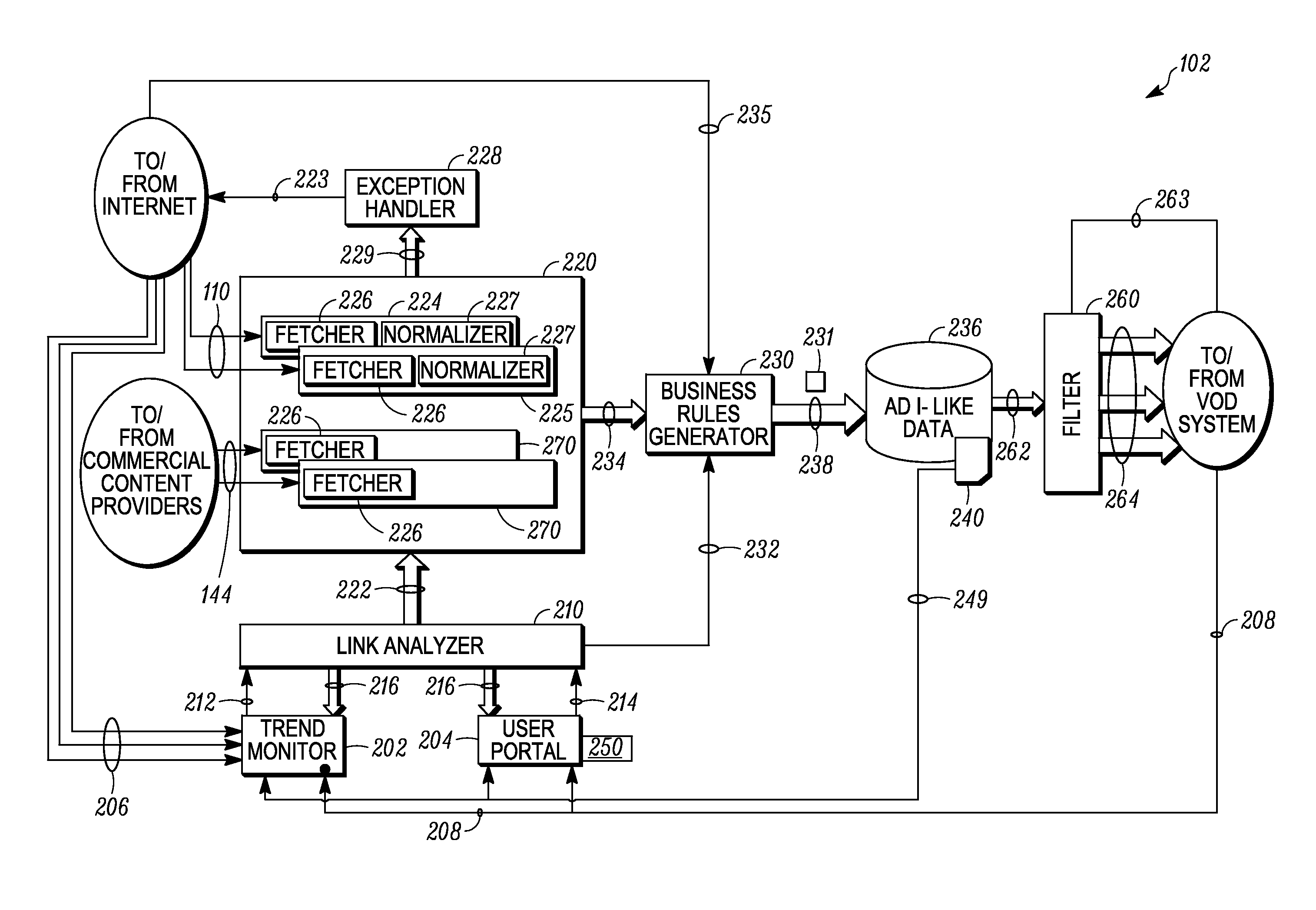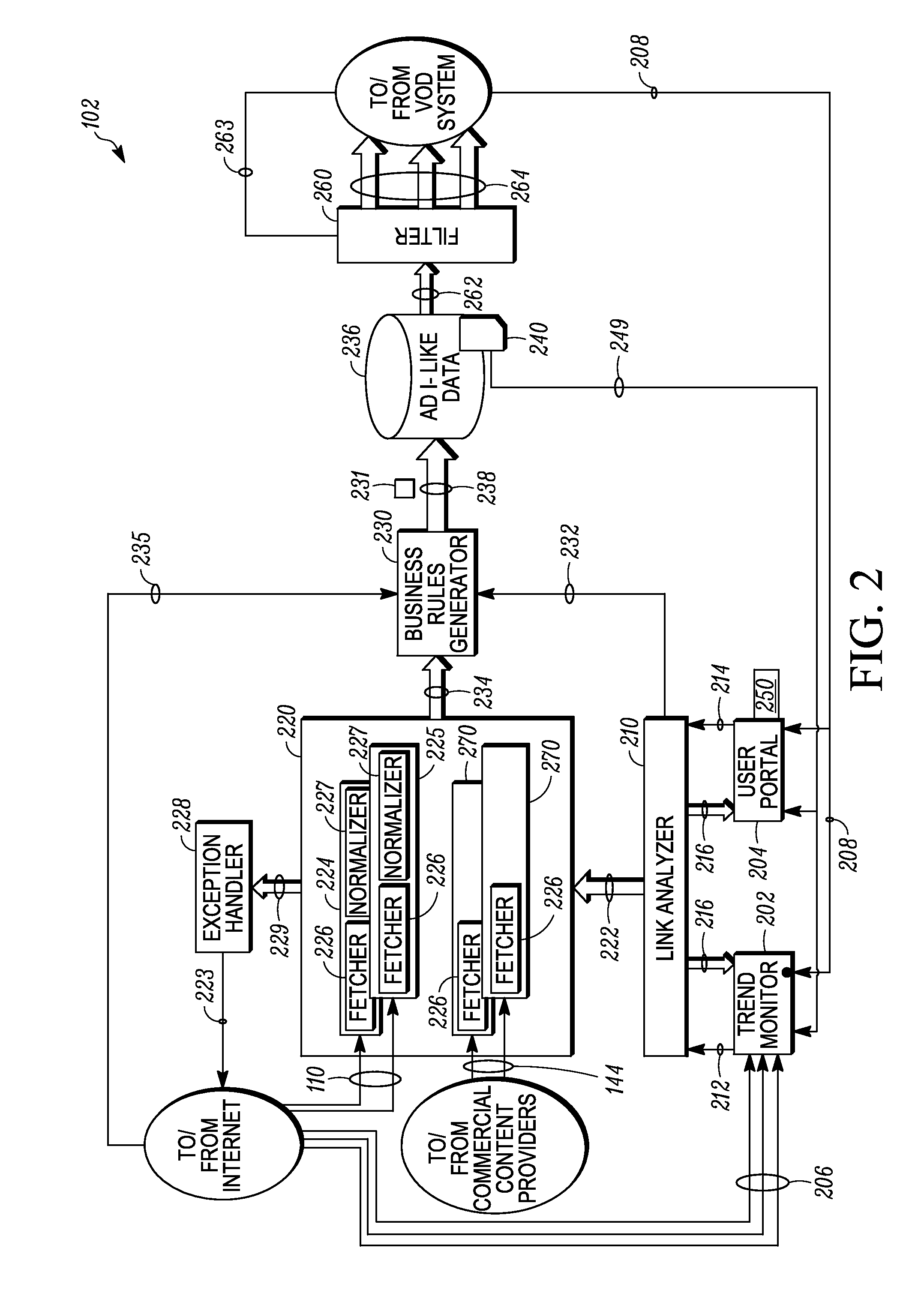Method and system for facilitating demand-driven distribution of content
a technology of demand-driven distribution and content, applied in the field of content distribution, can solve the problems of bringing additional complexity in software configuration and setup, unable to meet the needs of consumers, and conventional vod solutions are not appropriate for consumers, so as to achieve the effect of smoothing out semantic discrepancies
- Summary
- Abstract
- Description
- Claims
- Application Information
AI Technical Summary
Benefits of technology
Problems solved by technology
Method used
Image
Examples
Embodiment Construction
[0020]Referring to FIG. 1, a block diagram of an example content distribution system 100 is shown in a simplified schematic form. As shown, the content distribution system 100 includes a content processing system 102 that is in communication with (or capable of communications with) the interne 104, by which the content processing system 102 is further in communication with (or capable of communication with) first and second web servers 106 and 108, respectively. Communications between the content distribution system 100 and the internet 102 are represented by a communication link 110, while communications between the internet 102 and the first and second web servers 106, 108 are represented by additional communication links 112 and 114, respectively, which themselves can be (but need not be) considered to form part of the internet as well.
[0021]As will be discussed in further detail below, the content processing system 102 among other things is able to receive information relating t...
PUM
 Login to View More
Login to View More Abstract
Description
Claims
Application Information
 Login to View More
Login to View More - R&D
- Intellectual Property
- Life Sciences
- Materials
- Tech Scout
- Unparalleled Data Quality
- Higher Quality Content
- 60% Fewer Hallucinations
Browse by: Latest US Patents, China's latest patents, Technical Efficacy Thesaurus, Application Domain, Technology Topic, Popular Technical Reports.
© 2025 PatSnap. All rights reserved.Legal|Privacy policy|Modern Slavery Act Transparency Statement|Sitemap|About US| Contact US: help@patsnap.com



